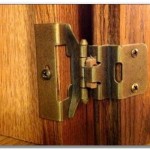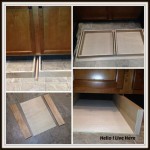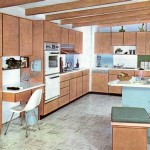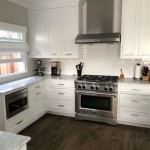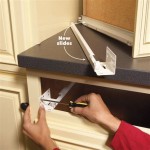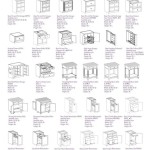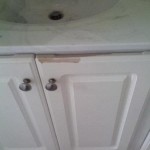Use Kitchen Cabinets
Kitchen cabinets are the backbone of any kitchen, providing essential storage and contributing significantly to the room's overall aesthetic. Understanding their diverse uses can maximize kitchen efficiency and create a more organized and enjoyable cooking space. This involves considering various factors, from storage of specific items to optimizing workflow and incorporating design elements.
One primary function of kitchen cabinets is storing food items. Pantries, whether integrated into the cabinet design or freestanding, offer designated spaces for dry goods, canned foods, and other non-perishables. Upper cabinets, often located above countertops, are ideal for storing less frequently used items or lighter goods like spices, glassware, and small appliances. Base cabinets, positioned beneath countertops, generally accommodate heavier items such as pots, pans, and mixing bowls. Drawers within base cabinets provide organized storage for cutlery, utensils, and linens.
Beyond food storage, kitchen cabinets play a crucial role in organizing cookware and serving ware. Pots and pans can be stored efficiently in deep drawers or base cabinets with specialized organizers to prevent stacking and scratching. Baking sheets, cutting boards, and serving platters can be stored vertically in designated compartments or racks to maximize space and accessibility. Drawers with dividers are ideal for organizing cutlery and utensils, keeping them separated and easily retrievable.
Small appliances often find a home within kitchen cabinets. Toasters, blenders, and coffee makers can be stored in designated areas, keeping countertops clear and promoting a tidy appearance. Appliance garages, a specialized type of cabinet, offer concealed storage, allowing appliances to be accessed easily while remaining out of sight when not in use. This contributes to a streamlined and uncluttered kitchen aesthetic.
Cleaning supplies are another essential category of items often stored in kitchen cabinets. Designating a specific cabinet or drawer for cleaning products keeps them organized and out of reach of children. Under-sink cabinets, while often used for plumbing fixtures, can also accommodate cleaning supplies if space allows. Utilizing organizers and caddies within these cabinets can maximize storage efficiency and prevent spills.
Kitchen cabinets also contribute significantly to the overall design of a kitchen. The style, color, and material of the cabinets play a key role in establishing the room's aesthetic, whether traditional, modern, or transitional. Cabinet hardware, such as knobs and pulls, can further enhance the design, adding a touch of personality and style. Glass-front cabinets offer an opportunity to display decorative items or cherished tableware, adding visual interest to the space.
Optimizing workflow is another critical aspect of using kitchen cabinets effectively. Positioning frequently used items in easily accessible locations minimizes unnecessary movement and enhances efficiency during meal preparation. Placing dishes and glassware near the dishwasher or sink streamlines the cleaning process. Locating pots and pans near the stovetop facilitates cooking tasks. Careful consideration of these factors can significantly improve the functionality and usability of the kitchen.
Integrating specialized storage solutions within kitchen cabinets further enhances their utility. Pull-out shelves, drawers with dividers, and vertical racks maximize space utilization and improve accessibility. Spice racks, knife blocks, and utensil holders provide designated storage for specific items, keeping them organized and readily available. These specialized solutions contribute to a more efficient and enjoyable cooking experience.
Beyond practical storage, kitchen cabinets offer opportunities for personalization and creative expression. Open shelving integrated within a cabinet design allows for the display of cookbooks, decorative items, or plants, adding a personal touch to the space. Utilizing the interior surfaces of cabinet doors for hanging small items or displaying artwork further maximizes functionality and adds visual interest. These small details can contribute significantly to creating a kitchen that reflects individual style and preferences.
Maintaining the organization of kitchen cabinets is crucial for long-term functionality and efficiency. Regularly decluttering and purging unused items prevents overcrowding and ensures that everything has its designated place. Utilizing labels and clear storage containers helps maintain order and facilitates easy retrieval of items. Implementing these practices contributes to a more organized and functional kitchen environment.
In conclusion, kitchen cabinets are far more than mere storage units; they are integral components of a functional and aesthetically pleasing kitchen. By understanding their diverse uses and incorporating thoughtful organizational strategies, individuals can maximize the efficiency and enjoyment of their kitchen space.

Which Kitchen Cabinets Are The Best For What Uses

The Definitive Guide To Used Kitchen Cabinets

Use Kitchen Cabinets Throughout Your House Cleverly

64 Kitchen Cabinet Design Ideas 2024 Unique Styles

How To Organize Your Kitchen Cabinets One At A Time

What S Behind The Kitchen Cabinets Hdr Remodeling

5 Reasons To Use Open Kitchen Shelving Solid Wood Cabinets Blog

How To Paint Kitchen Cabinets Like The Pros

7 Best Kitchen Cabinet Materials To Protect You From Poor Quality Horrors

Why Use White Cabinets In A Traditional Kitchen Wood Co
Related Posts

